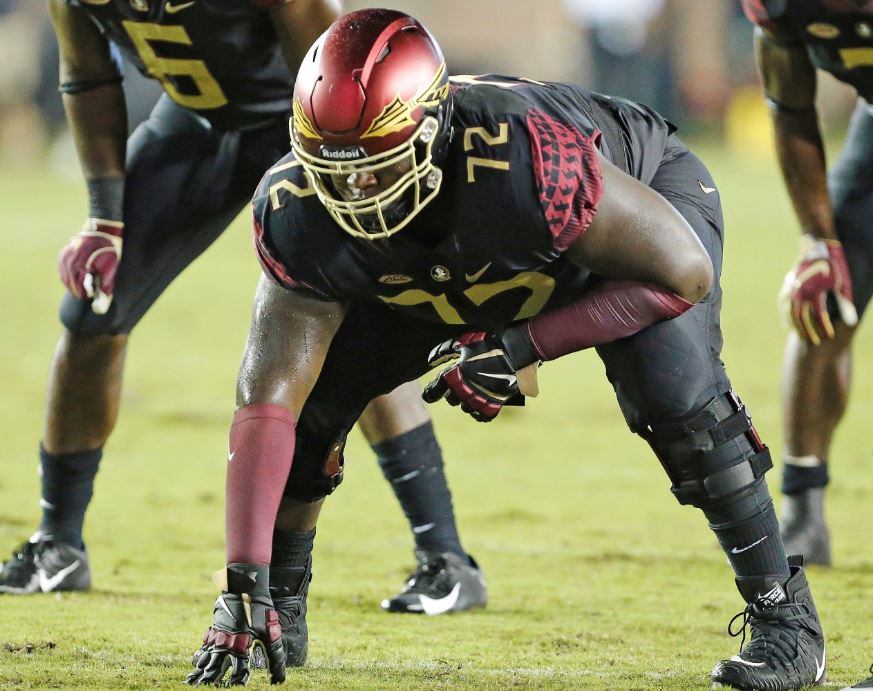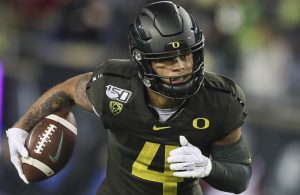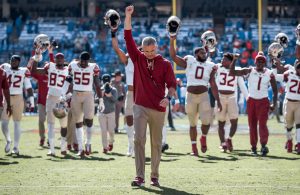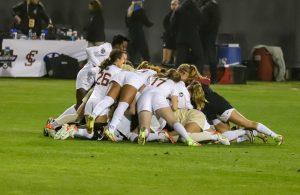- Sunday Seminole Summary: FSU Football Adds Pair of WR Transfers
- Sunday Seminole Summary: FSU Football Exits ESD With Top-15 Class
- Sunday Seminole Summary: FSU Soccer Tops BYU for Third National Championship
- Sunday Seminole Summary: FSU Soccer Advances to National Championship Match
- Seminole Sunday Summary: FSU Soccer Heads Back to College Cup
- Seminole Sunday Summary: FSU Soccer Reaches Sweet 16; Football Tops Boston College
- Seminole Sunday Summary: FSU Soccer Wins ACC, Advances to Second Round of NCAA Tournament; FSU Football Rallies Past Miami
- Seminole Sunday Summary: FSU Soccer Tops Wake on OT to Advance to ACC Final
- Seminole Sunday Summary: FSU Football Crushes UMass for Third Straight Win
- Seminole Sunday Summary: FSU Soccer Stays Perfect with Pair of Wins
Column: Fundamental Problems With FSU Offensive Line Will Shape Season
- By Clint Eiland
- Updated: September 5, 2018
 Ken Lanese/FSU athletics
Ken Lanese/FSU athleticsIn life, there are problems under your control and problems that are not. It’s a vague platitude that says ultimately nothing revolutionary, but it can still serve as a reminder to look at the “big picture” view.
In fact, it’s so vague that it can apply to basically every realm of life you can think of. Football is no different.
So let’s take the Florida State offensive line. If you paid one ounce of attention to preseason chatter, you knew coming in to 2018 that the line was one of two glaring question marks. There was some fluctuation in potential outcomes, but the upper end of that fluctuation was “pleasant surprise”. The lower end was…bad.
Monday night’s contest was decidedly the lower end option. Injuries were a huge risk to any sort of consistency, and sure enough, both Landon Dickerson and Derrick Kelly are now questionable for this week after hobbling off the field against Virginia Tech. Starting guard Cole Minshew was also a health scratch before the game even started. Might as well get it all out now, right?
How did Florida State get into a position where even one injury can drastically alter an offensive game plan?
That’s no exaggeration either. If the offensive line had managed an average performance, FSU would not be dealing with the aftermath of scoring just three points in the debut of a coach known for offense. There wouldn’t be lamentation over play-calling or questions about which players deserve to get reps. All the offensive line needed to do was not collapse.
Let’s start with what coaches can control.
If it becomes obvious that your line is having trouble getting any sort of push in the run game, quicker plays that require less time to develop are your best bet at gaining positive yards. Options, draws, and some screens are not ideal when you’re pushed back near your own end zone.
Willie Taggart wanted his offensive identity to be power-running, but he simply didn’t have the line to actually do it. Why he didn’t look for quicker plays was odd and one of the legitimate knocks on his game plan. That’s a layman’s description of the problem, but the point remains the same.
When you run a tempo offense, your players need to know where they’re positioned before they even get to the line. Far too many times on Monday night, it looked as if the receivers were unsure of their next move. On some snaps it was a dead giveaway for the defense, and on others, it simply resulted in a busted play.
Truthfully there’s no better remedy for this than actual in-game experience, though coaches can certainly focus on it in practice. If you need to divert from the offensive line, you also need your receivers to have some sort of blocking ability. Florida State graded out poorly in this respect.
But even if the coaching staff addresses every single detail under its control, the FSU offensive line is still going to be the weakest part of the team. Why?
Because there are two factors they have absolutely no control over. Injuries, and more importantly, current personnel.
Injuries should go without saying. Everyone blames strength and conditioning coaches but they really can’t prevent 99 percent of injuries that happen on a football field. It’s a contact sport with humans that typically weigh upwards of 200 pounds moving very fast towards each other. What is a coach supposed to do if Landon Dickerson gets nicked?
Greg Frey, the offensive line coach, inherited a unit devoid of consistency and depth from the end of the Jimbo Fisher/Rick Trickett era. While the lines were never strengths, they were also unfairly maligned during a couple of seasons. That seems like it’s a defense of them, but look at the first part of that statement.
Florida State should have no trouble bringing offensive line talent to the university. Similarly, it should have no trouble developing at least some of that talent into quality starters. It did neither in the past three years.
From 2015 to 2017, FSU brought in just five blue-chip linemen: Abdul Bello, Landon Dickerson, Baveon Johnson, Jauan Williams, and Josh Ball. One of those is off the team and two others have not developed properly in two offseasons. Injuries played a part in both, but it can’t explain why neither are prepared to see minimal play time.
Offensive line is one position group where rankings are not nearly as accurate as they might be for other positions. Mainly because it relies on a lot of development and physical changes that are hard to quantify for an 18-year-old. With this in mind however, it also becomes clear that the development didn’t really happen for the lower-rated prospects either.
The only projected starters/major contributors on the offensive line who were not blue-chip prospects are Cole Minshew and Mike Arnold. But Minshew exemplifies the holdover issues from the previous regime of a player who shows flashes of dominance but can’t discover consistency. Arnold is simply a last-ditch option.
All this to say, there’s no easy fix here. Taggart and offensive coordinator Walt Bell will change up the focus and try to work around the issue, while Frey will try to get a consistent starting five on the same page. Yet even with the brightest minds in the game, the offensive line has a barrier to success. FSU does not have the personnel right now to run what it wants to run. That’s going to require recruiting, better development over time, and experience.
FSU is on the right track in recruiting and Frey is a good coach to try and solve the conundrum. It’ll still take time for them to come together as a unit, but further down the road, it could be a legitimate strength.
That won’t be soon however. This line will likely cost the team at least two more games — perhaps more if injury luck is not in their favor.




You must be logged in to post a comment Login